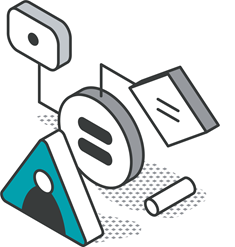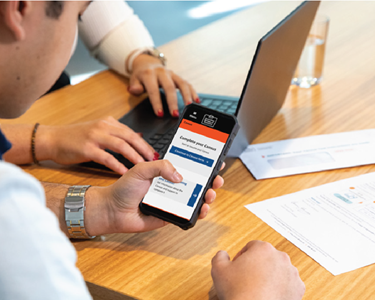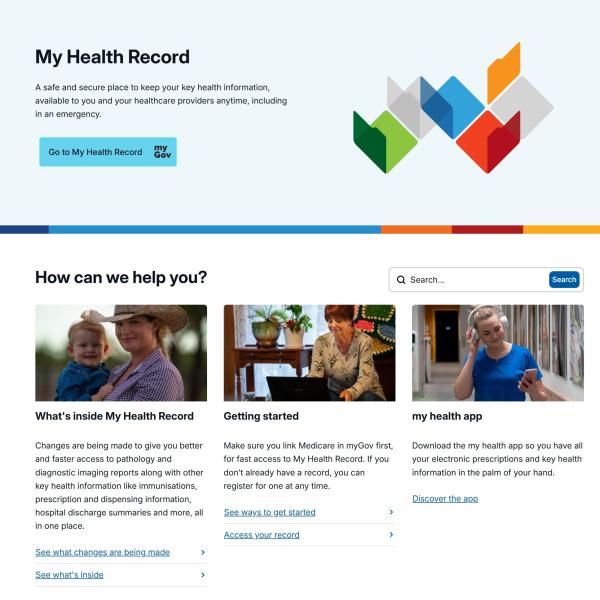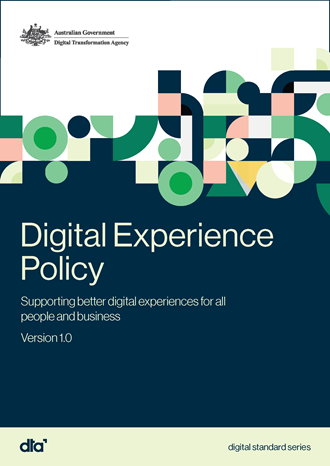
The Government is transforming the way digital services are delivered, to provide a seamless experience that meets the diverse needs of people and business.
Delivering seamless services
As digital engagement grows, the Government has invested in streamlining access to digital services, balancing useability with an appropriate level of friction to safeguard against security and fraud risks. This allows people to securely complete tasks online using strong digital foundations, without needing to navigate complex systems.
Strengthening myGov (Opens in a new tab/window)as the digital front door for Australians has simplified online service access, enhanced security and improved users’ experience. In the last year, Government has continued to broaden the number of services that can be linked via myGov, better integrating myID (Opens in a new tab/window)with myGov to allow users to more easily use myID as a secure sign-in option when accessing their myGov account.
The Government will encourage greater use of Digital ID by government and business services to realise productivity, security, and service delivery benefits. This includes enabling the private sector to apply to join the Australian Government Digital ID System(Opens in a new tab/window) from December 2026.

In partnership with the real estate sector, Government is piloting the use of Digital ID and the Consumer Data Right to support applicants to share less personal information when applying for rental accommodation. This will simplify the process of applying for a home while ensuring people have better control over the information they share with private organisations.
Government will continue exploring how verifiable credentials technology may be adopted to complement existing methods for delivering seamless government services. Verifiable credentials are digital versions of physical credentials, such as Medicare cards, that can be verified without needing to contact the issuing authority. Services Australia and the ATO are trialling verifiable credentials and digital wallets to learn what is needed to realise their benefits for improving service delivery.
In the coming year, people will be able to access the 2026 Census online through myGov for the first time. This will enable people to respond to the census via a secure and trusted channel, delivering streamlined and connected services through one digital front door.
Services Australia is exploring improvements to its digital assistants and broader search capabilities to meet growing customer expectations when using online services. The trial explores the capabilities of an AI Large Language Model to improve responses to questions from customers and staff using natural language. This will result in a more comprehensive knowledge base and more efficient customer interactions
Spotlight: Connecting people to digital health services
The Government is making it easier to access world-class, digitally enabled health care services. Investment in the National Digital Health Infrastructure Modernisation Program(Opens in a new tab/window) supports consumers and healthcare providers to access high-quality health care data when and where it is needed.
Work is underway modernising and driving adoption of the My Health Record system(Opens in a new tab/window) with the Australian Digital Health Agency commencing work building a Fast Healthcare Interoperability Resources standard repository to enable the system to meet consumer demand for near real-time health information sharing.
At the same time, engagement with My Health Record continues to grow, with expanded access and use across various sectors including pathology, diagnostic imaging and allied health. The passage of the Modernising My Health Record (Sharing by Default) Act 2025(Opens in a new tab/window) has further accelerated sharing of pathology and diagnostic imaging reports to My Health Record, with uploads of pathology and diagnostic imaging reports increasing by 35% and 41% respectively between June 2024 to June 2025.
These initiatives are driving progress towards a more connected, person-centred health care system that empower consumers to be active participants in their health and care journey.

Placing users at the centre
A world-class digital government delivers services that are designed to meet the needs of the people they serve. In the last year, the Government’s has focused on ensuring services are accessible, inclusive and responsive to people’s needs, with support targeted to those who need it most, to ensure no one is left behind.

The Digital Experience Policy(Opens in a new tab/window) sets clear standards for digital services, inclusion, access and performance, strengthening inclusion and accessibility, delivering user-focused digital government services. These standards support the design and delivery of digital services that are connected across government and incorporate user feedback to create a consistent experience for users. In 2024, the Department of Social Services refreshed its website, ensuring that the new site meets the Digital Experience Policy. The new site includes features to improve users’ access to, and experience of, the website.
Services Australia and the Australian Public Service Commission provide whole-of-government advice on designing and delivering people-centric policies and services through the Australian Public Service Experience Design Principles(Opens in a new tab/window). The principles provide guidance for embedding human-centred design approaches into the creation of new services and the improvement of existing ones – elevating the experience for government customers, staff, businesses and third-party partners.
Services Australia is leading the National Life Events program, a whole-of-government initiative which aims to reframe the delivery of services around people and the key events in their life, rather than around how government is organised. It has partnered with ACT and Queensland Governments to pilot the Newborn Enrolment Service under the Birth of a Child Life Event, delivering a first of its kind, cross-jurisdictional ‘tell us once’ approach. The pilot service streamlines administration processes for the enrolment and registration of newborns for Medicare, Centrelink and state and territory government Registries of Births, Deaths and Marriages, and provides earlier access to eligible payments and services.
Removing the need to complete multiple forms following the birth of a child reduces the administrative burden on parents, and establishes health and identity records from birth, which improves outcomes for people as they move through other key life events. The agency is preparing a plan to transition the pilot service to a nationally available service over a two-year period commencing 1 July 2026.

of Australians now have access to the internet.
The Government is targeting support to those who need it most to ensure no one is left behind.
Source: BCARR Research
Ensuring no one is left behind
Lack of connectivity and access to the internet presents a barrier to accessing digital services for some people and communities across Australia. The Government is focusing support on the people and communities most at risk of being left behind in the digital age, improving connectivity to close the digital divide.
The School Student Broadband Initiative(Opens in a new tab/window) provides 30,000 families with a free NBN connection to boost educational opportunities for school-aged children through access to online learning resources. The NBN connection can be used by the whole family, supporting access to digital government services for those who need it most.
The Government has invested $13.7 million into the School Student Broadband Initiative to extend the program’s availability to 2028.
The NBN Co Free Community Wi-Fi program is also delivering free internet access in 23 remote First Nations communities.
These communities would otherwise be digitally excluded due to the lack of affordable connectivity options. The program supports First Nations digital inclusion and progress towards ‘Closing the Gap(Opens in a new tab/window)’, aiming to improve access to myGov and other online services, including for health, employment, education and training opportunities.
The National Audit of Mobile Coverage(Opens in a new tab/window) has completed annual auditing of 4G and 5G mobile coverage of around 180,000 kms of roads and at 77 towns in regional and rural Australia since May 2024.
The National Audit is expected to continue until 2027, collecting crowd-sourced data from over 160,000 daily mobile users nationwide.
The aggregated data provides insights into coverage where people are using their mobile devices, including identifying coverage gaps.
The Government is also investing in improving communication systems to streamline how authorities communicate with people in affected areas during emergency events. The National Messaging System(Opens in a new tab/window) is a new form of emergency alert messaging system that is more reliable, accurate, and efficient than current systems. It will allow emergency services across Australia to send targeted warning messages in near real time, helping to save lives and property. The messaging system will be subject to a national testing process in 2026, before becoming operational in 2027.
These initiatives contribute to services that are simple, inclusive and centred around real needs, especially during life’s critical moments.
Delivering services safely

Designing services in partnership with users makes digital spaces safer and more inclusive for Australians who are most at risk of digital exclusion. To support ‘Closing the Gap(Opens in a new tab/window)’, the Government is engaging with advisory bodies through mechanisms such as the First Nations Digital Inclusion Roadmap(Opens in a new tab/window) to drive progress on closing the digital divide.
Expanding the availability of free and low-cost digital mental health services will make them more accessible for all people. The National Early Intervention Service(Opens in a new tab/window) aims to address critical gaps in mental health and suicide prevention by expanding the range of free digital mental health services, so people can get the right care for their needs. Expected to commence in January 2026, the National Early Intervention Service will offer guided and self-guided mental health support, resources and information for help-seekers and their families, carers and support networks.
Listening to people who have experienced the digital divide ensures safety is built into digital systems from the outset. The Government is applying safety by design principles by conducting an audit of Australian Government systems(Opens in a new tab/window), identifying and addressing opportunities for abuse by perpetrators of family and domestic violence.
Together, these initiatives are helping to ensure that digital services are not only more accessible and inclusive, but also safer and more responsive to the real needs of people in Australia.